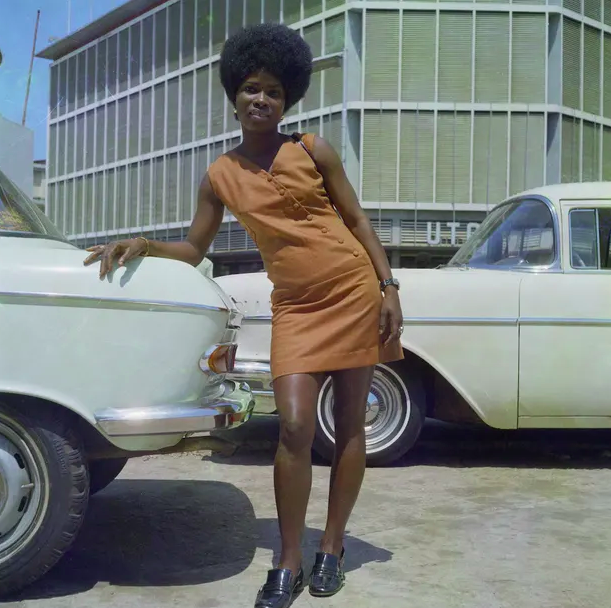This N That: Yesterday, Today, Tomorrow
A store assistant on Station Road, Accra, in 1971. Photograph: © James Barnor/courtesy Nubuke Foundation/Galerie Clémentine de la Féronnière.
By Emilia Pesantes
Better Late Than Never: Gaining Recognition at the Age of 90
James Barnor is a photographer who documented the 50s in Ghana and the 60s in London, always focusing his lens on people of color, whether in their hometowns or as part of a diaspora. However, it isn’t until recently that Ghana, Barnor’s home-country, began to recognize the photographer’s work – enough to even give him his own retrospective. Barnor is responsible for a breadth of images representative of Ghana’s strive for independence throughout the 50s. He shot key political figures and covered central moments that portrayed Ghana’s growing independence from the UK in 1957. Some of these images are now believed to be a major part of Ghana’s efforts to decolonize and being given credit for doing so.
Barnor moved to London at the tail end of the decade, during a time when counterculture was taking center stage and younger people were driving the years that followed the war. When he returned home, Barnor took everything he learned in London, from color processing to composing and printing images, and started up his own means of teaching the Ghanaian people of the medium and its potential. Despite this all, modern times caught up to Barnor. Photo processes were no longer the same and neither were the places he saw in such transformative states. But Barnor’s determination led him to having three gallery openings in Paris along with the lifelong knowledge that his hometown finally sees him for the revolutionary photographer that he was and continues to be.
PHOTOGRAPH BY PAOLO WOODS AND GABRIELE GALIMBERTI
National Geographic Releases “Best Photos of 2019”
Among many of the forms of recognition a photographer can garner, getting chosen to be a part of National Geographic’s “Best Photos of 2019” is a high praise. The photos selected are among over two million options, which ultimately dwindle down to 100 photos for the year. To director of visuals and curator, Whitney Johnson, these selections standout as photography that not only best represents the year that is to pass but also the photographic medium and its capabilities as a whole. Some examples that Johnson herself highlights include a photo of Mona Lisa being dusted after hours and wolves feeding on a carcass in a field. These photos demonstrate the magic that exists both out in the wild and behind closed doors.
The Best Photos of 2019 can be found on Nat Geo’s website.
All images may be subject to copyright.









